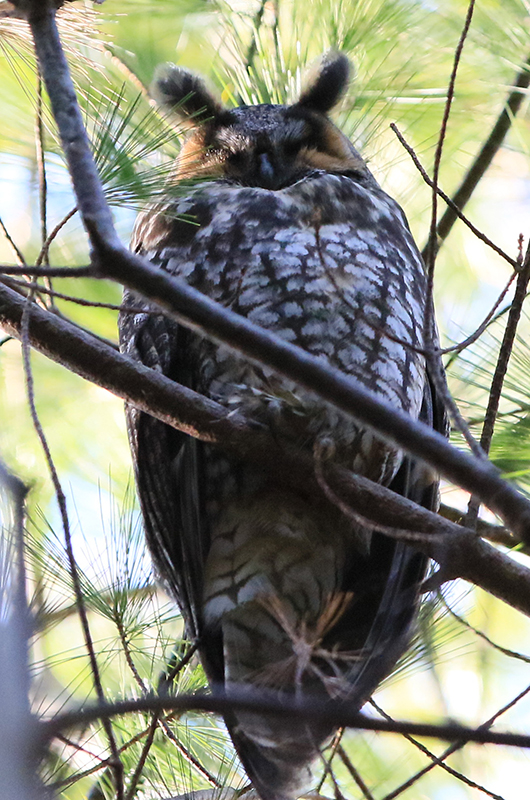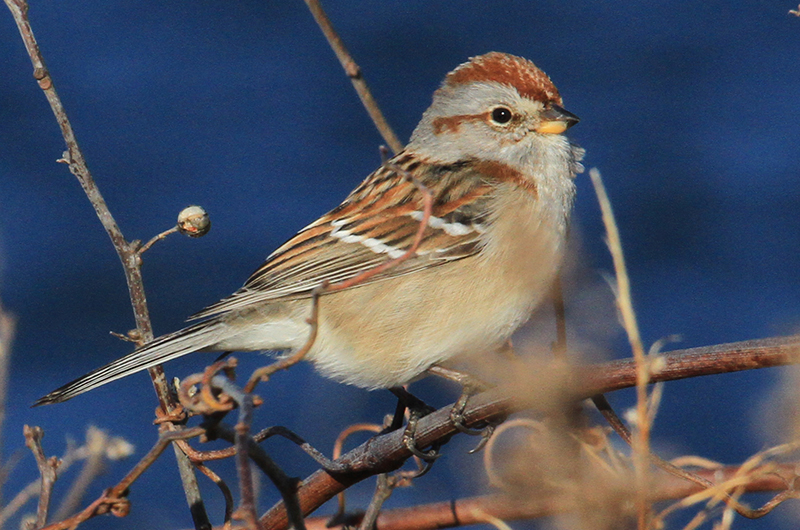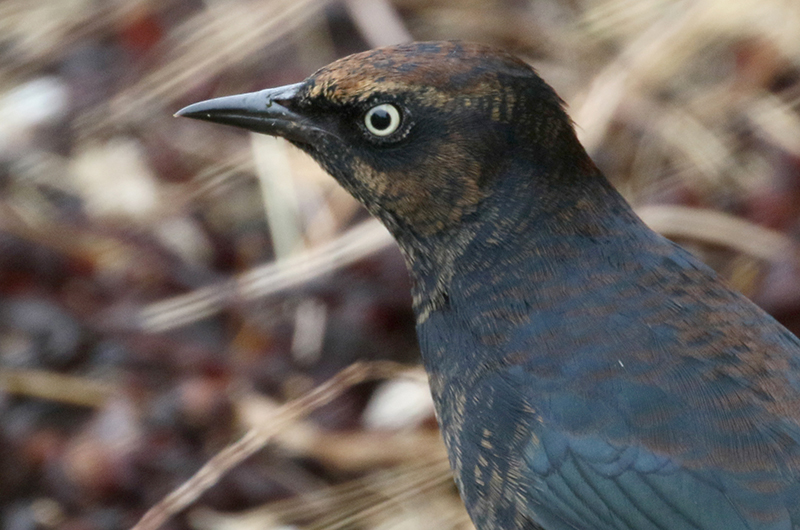Last week’s column gave an accounting of how my team fared in the field on a warm and wet 59th annual Christmas Bird Count. In contrast, this week’s column will examine how the count on Jan. 5 fared in comparison to recent counts of the past decade, an inherently math oriented task. This analysis is mostly limited to the past decade since those are the most recent years, and, for some unknown reason more species were seen and more individual birds were counted from 1990 to 2004.
The highlight of any count is adding species that have never been recorded in prior years; not easy to do since the count is now 59 years old. But this year we added two such species, the common raven and the barred owl. Both additions were expected. A flock of five ravens has been hanging around all fall, and a pair may have nested here last summer, and the barred owl has been hanging out from Sheriff’s Meadow Sanctuary to downtown Edgartown for more than one year.
Two unusual species are highlights of the count. Two rusty blackbirds were carefully observed at a feeder, making four straight years that this rapidly declining species has been found. This species was found on only three other counts since 2000 (2000, 2006, and 2007). Two long-eared owls were found in the State Forest. Most of the 11 sightings of this species were in the 1960s and 1970s, and the species had not been seen since 2003.
Surprisingly, three species set new highs in this soggy count. The 15 pine warblers observed slightly increases the previous all-time high of 14 on the 2007 count, while other counts have fewer than 10. Wild turkeys (well, that is their official name!) set a new high, at 297 individuals, up from the previous high last year of 246. And four thick-billed murres were seen in Menemsha, only the fifth time the species has been recorded and the first time we have found more than one.
Three other species set new highs for recent counts. Great cormorants, at 133 individuals counted, represents the first time we found more than 100 since the 2000 count. Eleven ruby-crowned kinglets were found, the first time since 2006 that we found more than 10 of them. And 16 grackles were seen, the highest total since 100 were seen in 2005.
The perky but small Carolina wrens continue their steady increase after the cold and snowy winter of 2014-15. We spotted 146 of them this year, up from 36 on the 2015 count. Tufted titmice also continue to build their numbers, with 234 seen this year, only slightly below last year’s high of high 249. There were only two seen in 2001.
Small accipiters continue an ominous trend. The 11 Coopers hawks seen is close to their all time high (since 1960) of 13 on the 2008 count. This contrasts to only one sharp-shinned hawk seen. The previous lows were three individuals spotted three times (2013, 2016, and 2017). Sharpies used to be more common before the 2000 count.
Given the rainy conditions on count day, there are fewer low points than might be expected. Only two species are surprisingly absent: American tree sparrows were not observed for only the second time, with the first miss coming in 1977, and chipping sparrows were not observed this year for the first time since 2005.
We found 109 red-breasted nuthatches, the first time since 2012 that more than 100 were observed. But this was the only irruptive species from the boreal forests of Canada that we observed. No crossbills, redpolls, or evening grosbeaks were observed even though they were present in December.
We counted only 16,548 birds of 112 species this year, the lowest totals since 106 species were found in 1992, and the second lowest number of individuals since 1978. The only other count that low was when we observed 15,926 individuals in the 2010 count.
House finches, eastern meadowlarks, white-throated sparrows and yellow-rumped warblers all came close to their lowest numbers. And seven species set new lows for the counts held since 2000: red-tailed hawk, sanderling, dunlin, mourning dove, cedar waxwing, American goldfinch and house sparrow.
But we had fun going out to count the birds despite the uncooperative weather. We go out to count the birds in this largest of all citizen science databases rather than staying in our comfortable homes; too bad the birds did not do likewise! Any bird in its right mind is going to stay deep in thickets/cover to minimize its contact with the wetness. We were able to count the ones that ventured out into the open.
In other birding news, on Jan. 13 John Nelson spotted five turkey vultures on State Beach near the big bridge, and 28 black ducks were near Sarson’s Island. At the Farm Institute on Jan. 11 he found four savannah sparrows and 28 snow buntings. And on Jan. 13 he spotted lots of red throated loons close in the ocean close to shore.
Finally, in the dead seabird news, Lynn Fraker found a dead razorbill at Tashmoo Beach on Jan. 13. And Michal Whittemore found a dead common murre at Lucy Vincent Beach on Jan. 12. Though they are occasionally seen near the Vineyard, they have never been seen on a Christmas Bird Count (maybe next year). It is getting light ever earlier and so this month our thoughts and ears turn to increased bird song. Please report all your sightings to birds@mvgazette.com.
Robert Culbert will schedule a private Guided Birding Tour with you, and is an ecological consultant with Nature Watch, LLC living in Vineyard Haven.







Comments
Comment policy »